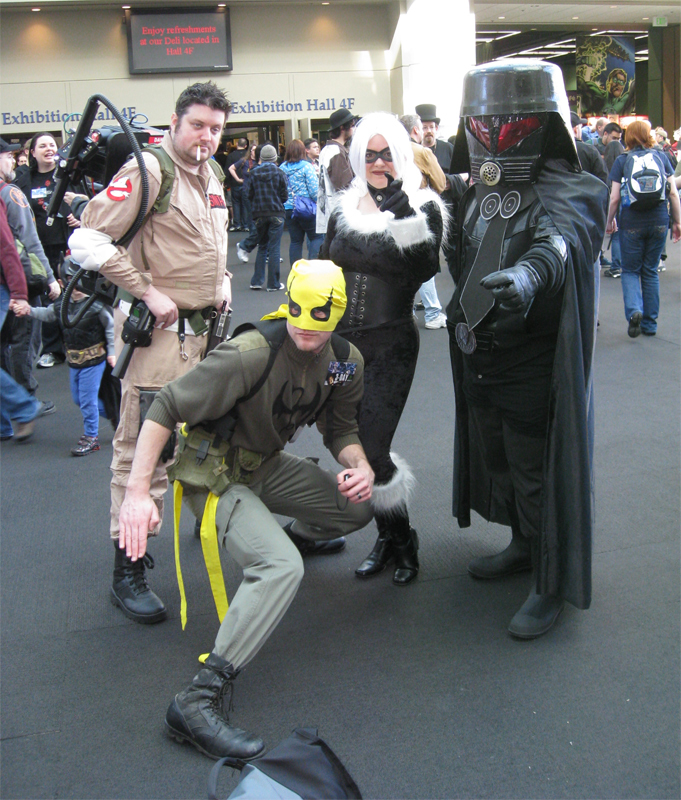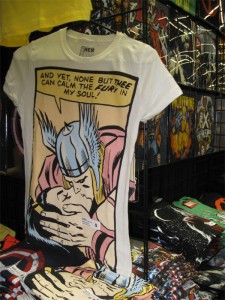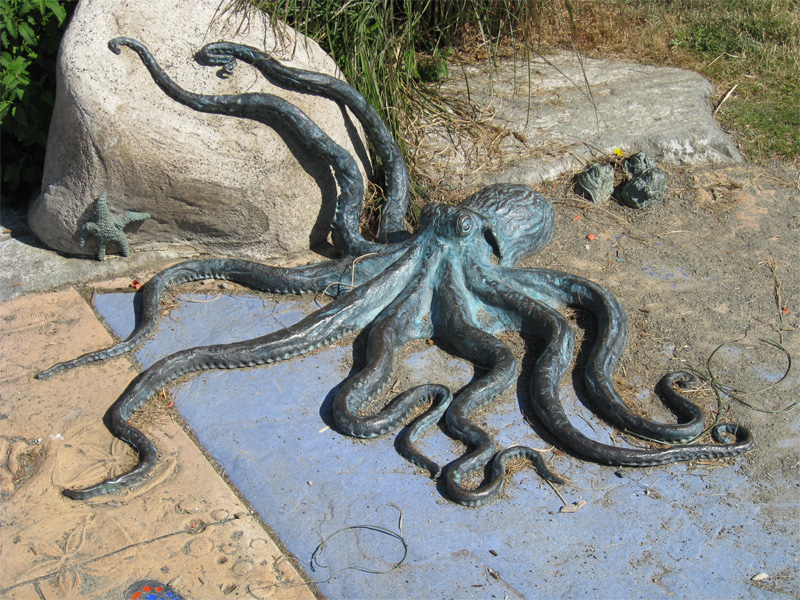
I spent most of yesterday being someone I’m not. Sort of a vacation from myself. I wasn’t alone.
At the Seattle Convention Center, the Emerald City Comicon was swarming with thousands of devotees of fantasy, sci-fi and general all-purpose make-believe. My kind of people.

I had always wanted to attend one of these things, but, lacking willing companions, held back, not wanting to be the lone pathetic geezer in the mosh pit, so to speak. But when one of my daughters urged me to go with her group, I ended up playing a role with which I am all too familiar: the “ironic housewife” from a sort of interactive online comic called “Homestuck.”
I know almost nothing about computer games. I’m in awe of their complexity, the speed with which the younger generation masters them, and the level of artistry in their world building and character design. However, “Homestuck” isn’t quite like any of the usual shoot ’em up, find the talisman type games. It’s kind of an existential ironic riff on the limitations of human experience and computer programming. With monsters.

I played along because, really, my main motivation for attending this particular con was that Spike was going to be there. If you don’t know who Spike is, what can I say? There’s too much back-story to cover, but, in short, he was a character on the iconic television series Buffy the Vampire Slayer and, for my money, he was the most charismatic vampire ever. Bar none. Over the course of six seasons his character continually evolved. He went from your basic blood-sucking demon, to a kind of neutered comic relief bad guy, who gradually developed a crush on his worst enemy, and ultimately, through intense personal suffering, became a heroic figure who literally saved the world. Not bad for a bleached blond creature of the night.
So, when I learned that James Marsters, the actor who played Spike, would be at this year’s con I knew I wanted to go, even though I had reservations. It can be a rude awakening to encounter one’s heroes in the harsh light of reality. Sometimes they seem a lot shorter, shallower, less heroic.
As I waited in the dark auditorium with six or seven hundred fellow enthusiasts, I hoped James wouldn’t let me down. He didn’t. As part of a three-member panel of former Buffy actors, he shone with self-effacing wit, humor and intelligence. I didn’t even mind that he spoke in his normal voice, rather than the pseudo-Cockney accent which was part of Spike’s enduring charm. I left the auditorium feeling soothed and uplifted. Not only because James didn’t disappoint, but because the entire event reminded me of why I love my counter-culture.

There were representatives from all corners of the universe at this thing. They came in all ages, all sizes, all genders, and embracing a vastly diverse spectrum of belief systems. And the mood among the thousands of fans was one of mutual admiration, tolerance and respect. Sort of like the way we used to think democracy would turn out.
I realize that sci-fi fans and fantasy geeks are still in the minority in this country. But I think what they bring to the table has value far beyond the box-office. The idea that humans have room for improvement, the hope that other worlds might know a few things we could stand to learn, the hope that we can all someday just learn to get along with each other. Yeah. Maybe that’s too far-fetched. What can I say? I’ll believe anything.





